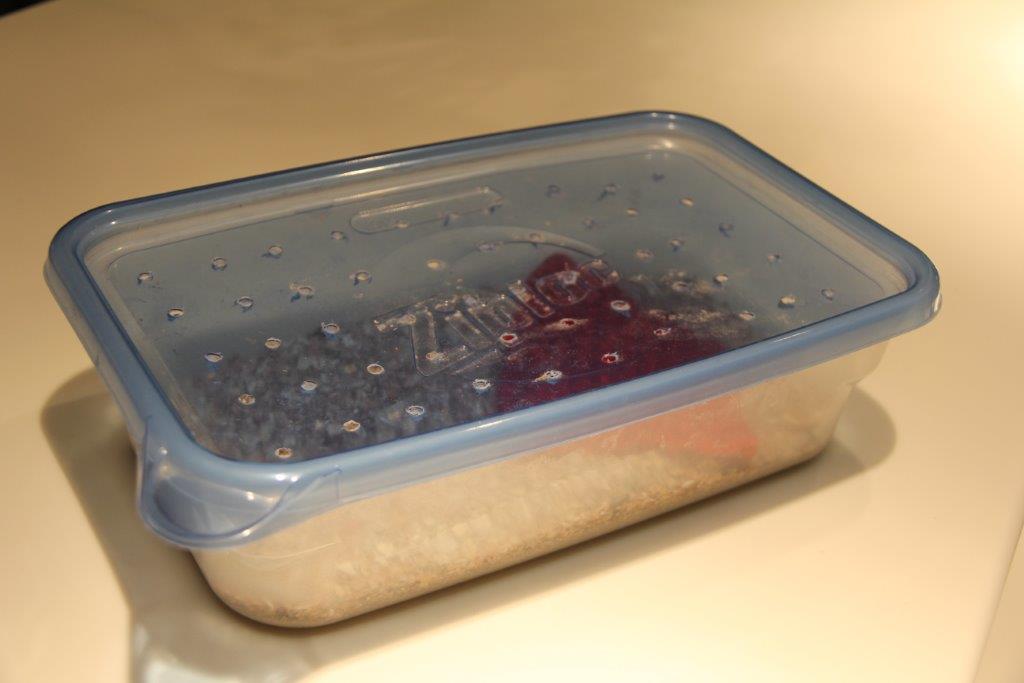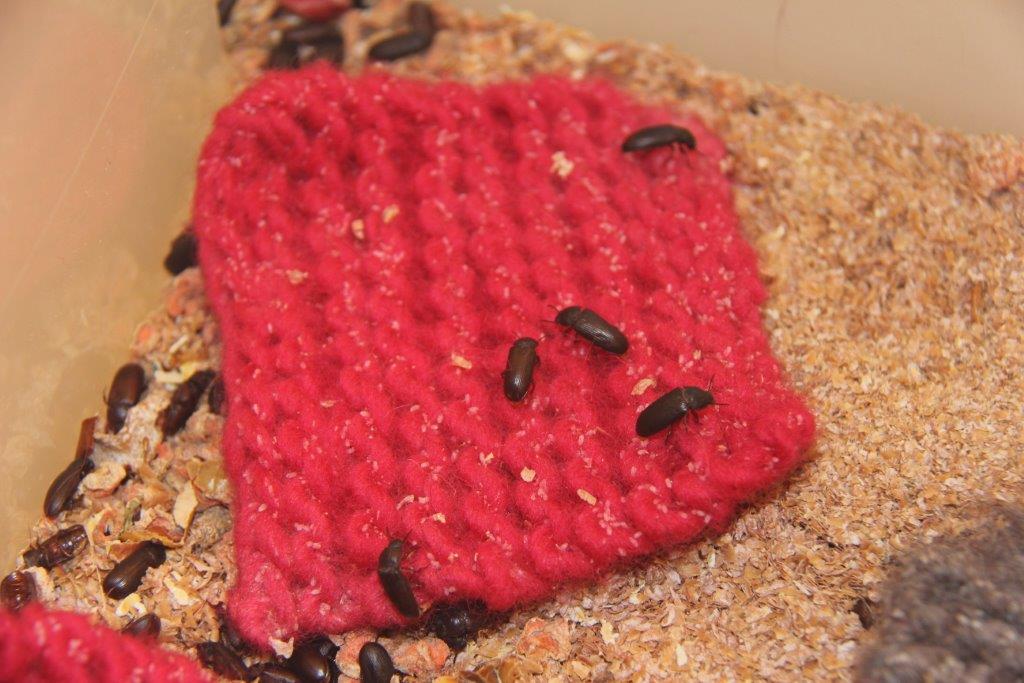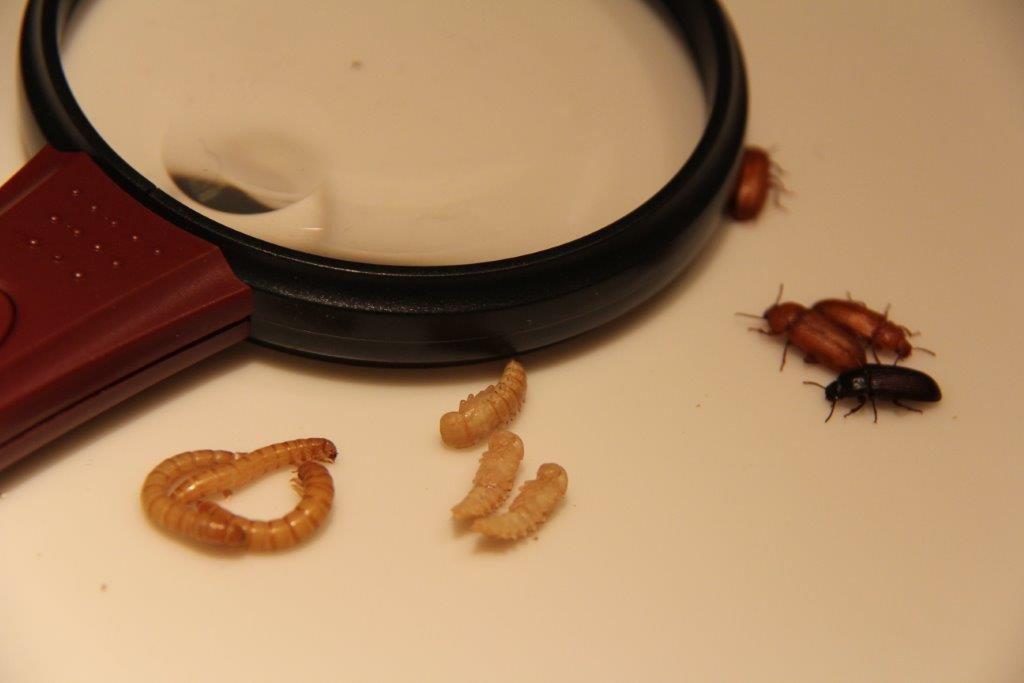I love relating to our backyard bluebirds with a little whistle and a live meal worm treat! The DRIED meal worms are a great treat if that is all that you have around. The bluebirds do love them and you can attract those lovely creatures to one of your boxes by placing them in a little plastic salad dressing cup secured on top of the box you want them to adopt. But compared to LIVE meal worms, it is like offering crackers when you could be serving them prime rib steak!
So why not grow my own meal worms? Then I would have plenty of live juicy meal worms to encourage and entice bluebirds to pick our back yard to make a nest, lay a clutch of eggs, and hatch a family of chicks. This is the question that I answered with an action plan! There is nothing sweeter than having a bluebird family in your back yard! It makes me smile just thinking about it now! But you have to really love bluebirds to get involved in raising the snacks they love best ….live meal worms! And I do love these birds!
This past winter proved to be very hard in Lancaster County with all the snow and ice. Starting my own meal worm farm gave me something to nurture and observe each evening as the weatherman was predicting yet another snow storm. The winter flew by as I watched the life cycle of the darkling beetle. Another bluebird lover, Carolyn Martin, shared some of her live worms with me to start my farm. You may have a friend like Carolyn or simply purchase one or two hundred live meal worm larvae at your local pet store to get a culture started. For less than $10. you can create your own farm.

I provided the worms (actually they are larvae) a comfortable home in a 9X12 plastic container with small holes drilled into the lid for air and added an inch of wheat bran, oat meal, or chicken feed to the bottom. A few small pieces of carrot, apple, potato, or lettuce were needed to supply moisture. Then I watched the larvae eat, molt and grow into adults who would soon change into pupae. After the pupae lay dormant for a week or two, they magically change into darkling beetles. For the next several months these beetles would eat and mate and lay thousands of eggs to start the cycle all over again.

Carolyn suggested that the beetles love to lay those hundreds even thousands of eggs on pieces of wool. So I cut up my husband’s wool socks and watched tiny eggs accumulate on those 4″X 4″ wool pieces. Those tiny eggs after about two weeks hatched into teeny, tiny, almost microscopic sized larvae. I needed a magnifying glass to even see the baby hatchlings. I guess I should not have been so surprised that those little larvae took up to two months to eat, grow, and molt into an adult size that would make a decent Bluebird snack!
To speed up the cycle, I kept the larvae farm on a heat vent in my dining room during the colder winter months. Room temperature is adequate for all stages of the cycle. When the larvae finally become feeding size, the cycle can be slowed down by placing the adult larvae in the refrigerator with plenty of wheat bran in a smaller container. Then they are readily available for the bluebirds you wish to please. And they will not so quickly turn into the pupa stage when they are in a cooler environment.
It is so interesting and enjoyable to watch the Cycle of the Darkling Beetle….so much fun that two of our grandsons, Isaac Eldeen (15 years old) and Reece Readinger(12 years old) picked up on the idea and started their own little farms in their own homes. Reece’s little sister Mallory (6 years old) decided she wanted a farm also! Children of all ages can enjoy and learn the mystery of the Darkling Beetle Life Cycle. Isaac took his project to the 17th Annual Pennsylvania Bluebird Conference March 27-28 2015 at the Eden Resort in Lancaster, Pa. He offered starter kits for those attendees who found raising meal worms as fascinating as we all did.
Having a meal worm farm of your own does not take a lot of time or money….just a real LOVE FOR BLUEBIRDS!
Happy farming from a “Happy Farmer”!
~Shirley Rust

